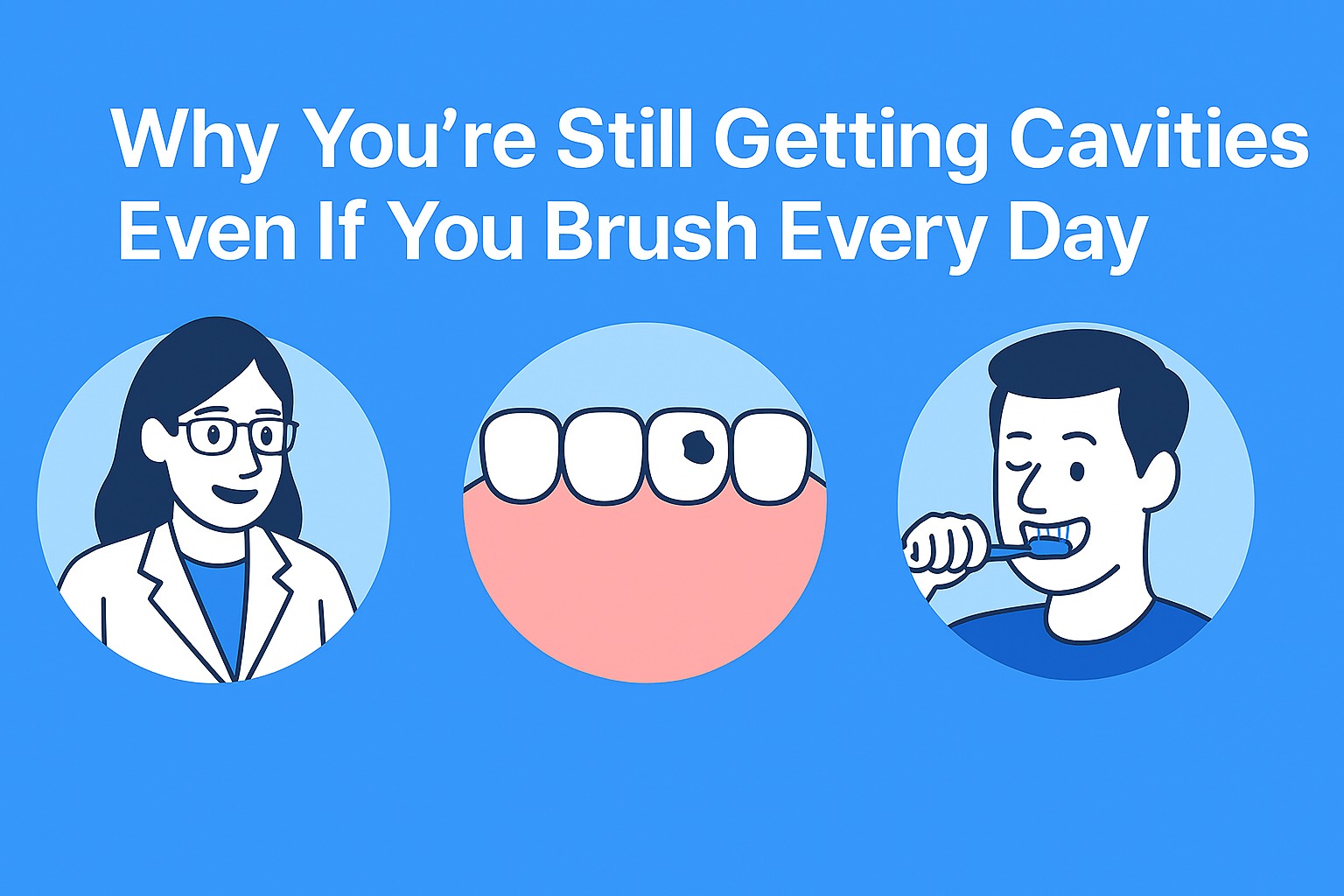Why You're Still Getting Cavities Even If You Brush Every Day
- Home
- Blog
- Oral Care
- Oral Care
- Comments
Why You're Still Getting Cavities Even If You Brush Every Day
You brush twice a day. You don't skip it — even when you're tired. So why do those pesky cavities still show up at every dental visit?
The Cavity Conundrum
The truth is, brushing is just one part of the puzzle. Cavities — or dental caries — form when bacteria feed on sugars and produce acid that erodes the tooth enamel. Brushing helps, but if your oral care routine misses a few key steps, decay can still thrive in hidden spots.
Understanding Cavities Beyond the Brush
While brushing is essential, it's not the complete solution to cavity prevention. Here are the often-overlooked factors that contribute to cavity formation:
⚠️ Common Cavity Culprits Beyond Brushing
Brushing Technique Matters: Simply brushing isn't enough — how you brush makes all the difference. If you're brushing too quickly or missing spots like the back molars or along the gumline, plaque can build up in those areas.
Flossing Is Non-Negotiable: Cavities often begin between the teeth — places your toothbrush can't reach. Without daily flossing, bacteria continue to accumulate in those tight spaces.
Sugary Snacks and Sips: Frequent snacking, especially on sugary or starchy foods, fuels bacteria. Even healthy foods like dried fruits, smoothies, or flavored yogurt can feed acid-producing microbes.
Acidic Drinks: Sodas, energy drinks, fruit juices, and even flavored water can soften your enamel. Brushing immediately after acidic drinks can actually worsen the damage.
Dry Mouth (Xerostomia): Saliva neutralizes acids and cleanses your teeth. If your mouth stays dry — due to medications, stress, or dehydration — cavity risk increases significantly.
Nighttime Habits: If you're not brushing before bed or if you grind your teeth while sleeping, bacteria have all night to do their damage without interruption.
How Dentinix Identifies Hidden Decay
At Dentinix, we go beyond surface-level checkups. Our team uses diagnostic tools like digital X-rays, intraoral cameras, and laser cavity detection to find early-stage decay that might not be visible or painful yet.
Our Comprehensive Assessment Approach
If you're developing cavities despite good brushing habits, we explore the full picture:
Are you flossing properly?
Are there deep pits or grooves in your teeth that trap food?
Are dietary habits or hidden sugar sources increasing your risk?
Is your enamel naturally weaker or worn down from grinding?
Based on this assessment, we create a plan that includes both in-clinic treatment and homecare strategies.
Dentinix Prevention Plan for Cavity-Prone Patients
✅ Our Comprehensive Prevention Strategies
Fluoride Treatments: Strengthen enamel and reduce sensitivity
Pit & Fissure Sealants: Especially for children or those with deep grooves on molars
Saliva Flow Assessment & Remineralization Gels: Address dry mouth issues
Nutrition Coaching: Identifying hidden sugars in your diet
Custom Oral Hygiene Plan: Tailored to your risk factors and brushing style
Perfecting Your Brushing Technique
The Dentinix Way to Brush
Use a Soft-Bristled Brush: Hard bristles can damage enamel and gums
Brush for 2 Minutes: Take your time to reach all surfaces
Gentle Circular Motions: Avoid harsh back-and-forth scrubbing
Don't Forget the Gumline: Plaque loves to hide here
Clean Your Tongue: Bacteria can accumulate here too
Replace Your Brush: Every 3-4 months or when bristles fray
The Importance of Professional Cleanings
Even with perfect home care, professional cleanings are essential because:
Tartar Removal: Once plaque hardens into tartar, only professionals can remove it
Early Detection: We can spot problems before they become painful
Professional Assessment: Evaluate your current oral health status
Preventive Treatments: Apply fluoride and sealants as needed
Education: Learn about new techniques and products
Final Word: Brushing Is Essential — But Not Sufficient
You're already doing a great job by brushing daily. But true cavity prevention requires a broader view — technique, frequency, diet, and routine dental checkups all play a role.
At Dentinix, we partner with you to uncover the why behind your cavities and stop them at the source — not just treat them when they arrive. Our comprehensive approach combines advanced diagnostics, personalized prevention plans, and ongoing education to help you achieve optimal oral health.
Don't let cavities keep surprising you. Contact Dentinix today to schedule a comprehensive oral health assessment and discover how our prevention-focused approach can help you maintain a cavity-free smile.

